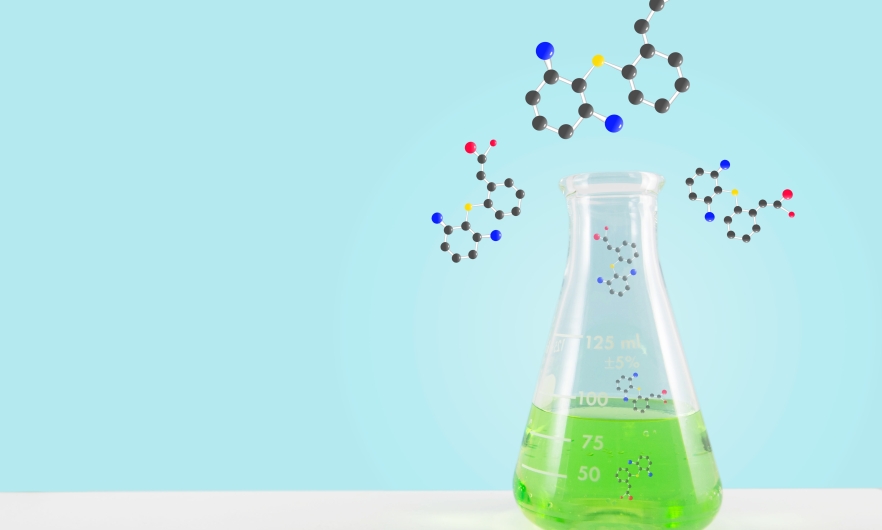Toxicology 2.0: Mapping the Exposome To Prevent Disease
A DOD working group led by professor Thomas Hartung seeks to change the way we measure, model, and mitigate the complex set of risks posed by the chemicals and drugs we are exposed to every day, a Human Exposome Project

Toxicology—the study of poisons—is due for an overhaul. The underlying methodologies of the discipline, which have remained largely stagnant for more than 50 years, are inadequate in terms of cost, time, throughput, animal use, and relevance of the results to humans, says Thomas Hartung, MD, PhD.
A working group commissioned by the Department of Defense and led by Hartung has outlined the paradigm shifts that need to take place to bring toxicology research in line with our current understanding of technology, exposure science, data science, and disease.
The group proposes a Human Exposome Project to complement the Human Genome Project. The Centers for Disease Control and Prevention defines the exposome as the measure of an individual’s exposures in a lifetime and how those exposures relate to health. The vision document came out of the Future Directions Workshop, sponsored by the Basic Research Office, Office of the Under Secretary of Defense for Research & Engineering. Hartung worked with two co-chairs, dozens of toxicology experts and a slate of agency observers over the past three years to lay out the plan.
We talked to Hartung about the report and its implications.
What is the current state of toxicology research and why does it need to be transformed?
The safety sciences, also known as toxicology, need a major revamp. Toxicology has evolved as a patchwork of methods that needs to be revised to meet societal needs. For example, many people are afraid of chemicals producing cancer. The current standard is to test rats every day for two years and then analyze their organs for possible cancer. This costs almost $1 million and to round out the tests takes four to five years. This time frame is not compatible with modern product development cycles. As a result, only about 1% of commercial chemicals are tested for their cancer risk.
What parallels do you draw between mapping the human genome and mapping the human exposome?
Thanks to the Human Genome Project, we know more and more about the genetic contribution to disease. The Human Exposome Project will also catalog the equally important contribution of exposure to toxins. Like DNA sequencing, which enabled the Human Genome Project, several disruptive technologies -- bioengineering of advanced cell cultures, robotics, sensor technologies, and AI—now enable systematic cataloging paths from exposure to disease.
The Human Genome Project has changed biomedicine with new diagnostics and treatments. It has also created large parts of the biotech industry. The Human Exposome Project promises something similar.
The report suggests a shift from hazard-driven and exposure-driven toxicology research. Can you explain the difference?
Hazard-driven means that we find what possible effects substances have at high doses, then we check whether such doses are reached in the environment, food, or contact with products. The problem is that this is extremely costly and takes many years. This has created a backlog of more than 100,000 chemicals on the market that lack critical data, a gap that can hardly be closed.
Exposure-driven means first that chemicals that do not reach relevant levels in the environment or human blood are deprioritized. This is called thresholds of toxicological concern. Second, the exposomics approach identifies those exposures that impact the human body by changing metabolism and gene expression. Only then is this traced back to the causative agents.
What are the hurdles to transforming study design and toxicology paradigms?
Toxicology has been seen until now as the process of delivering information for regulating products. This report sees it as the science serving medicine to identify the exposure contributions to disease. The key problem is change management.
How will the recommendations in this report be implemented?
A National Academies report from 2007 “Toxicity Testing for the 21st Century: a vision and a strategy” initiated this transformative process. With knowledge in the life sciences doubling about every three to four years, we have now 16 times more knowledge than at the time of the report.
The dissemination of the idea was started at this year’s Society of Toxicology meeting in March. We worked on establishing a global public-private partnership for a Human Exposome Project. This will establish intellectual leadership and communicate the opportunity to the science community and policymakers. For global outreach, we are currently preparing an event in the European Parliament. A proposal to ARPA-H and discussions with NIH have started.
The key message is that the vision to modernize toxicology is strategically furthered by paving the way for implementation. By redefining toxicology as the exposure basis of disease, from safety science to a fundamental pillar of disease, we unleash its potential for modern healthcare.
Environmental Health and Engineering is a cross-divisional department spanning the Bloomberg School of Public Health and the Whiting School of Engineering. This hybrid department is uniquely designed to lead pioneering research and prepare the next generation of scholars to solve critical and complex issues at the interface of public health and engineering. Learn more about our programs.
